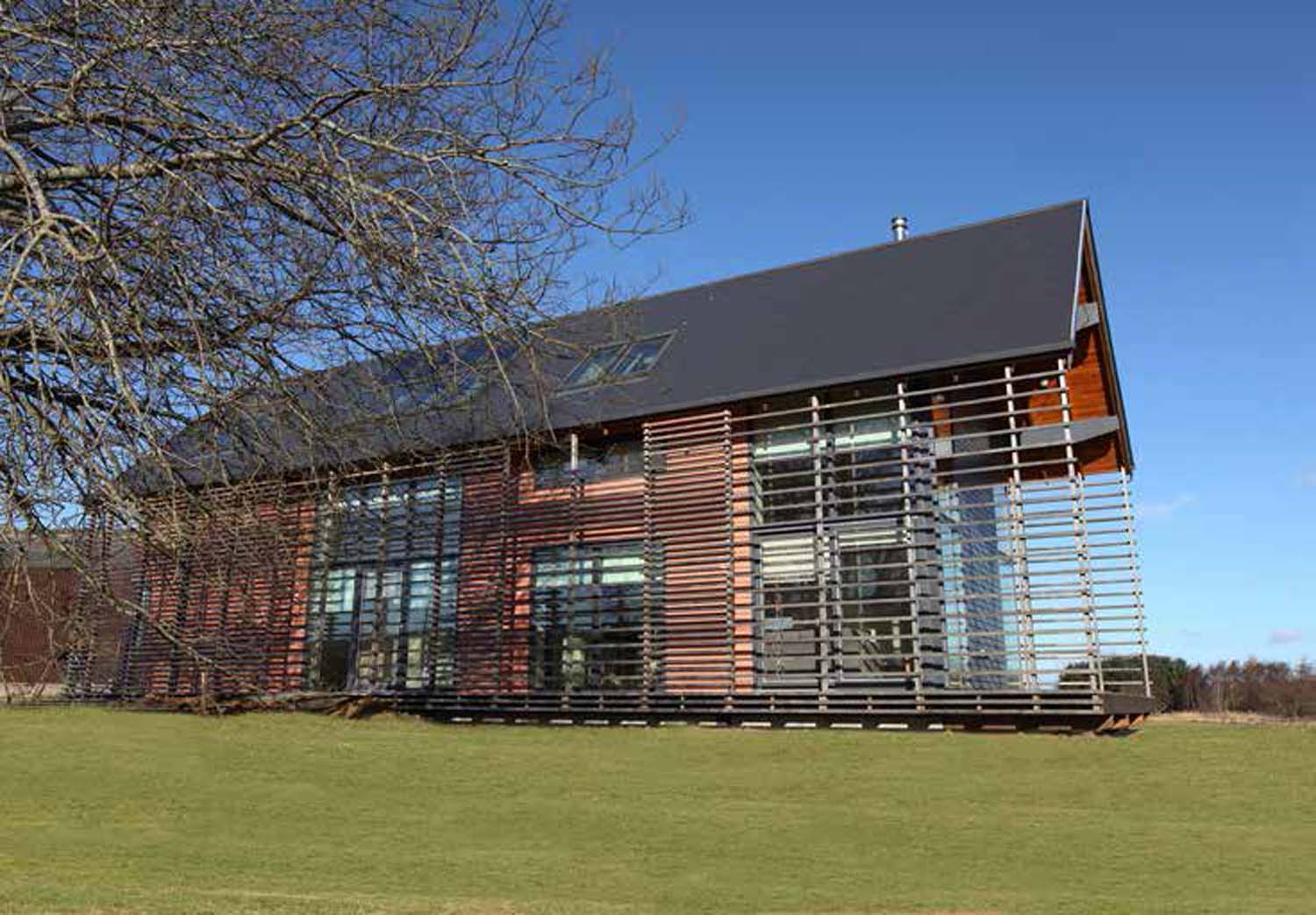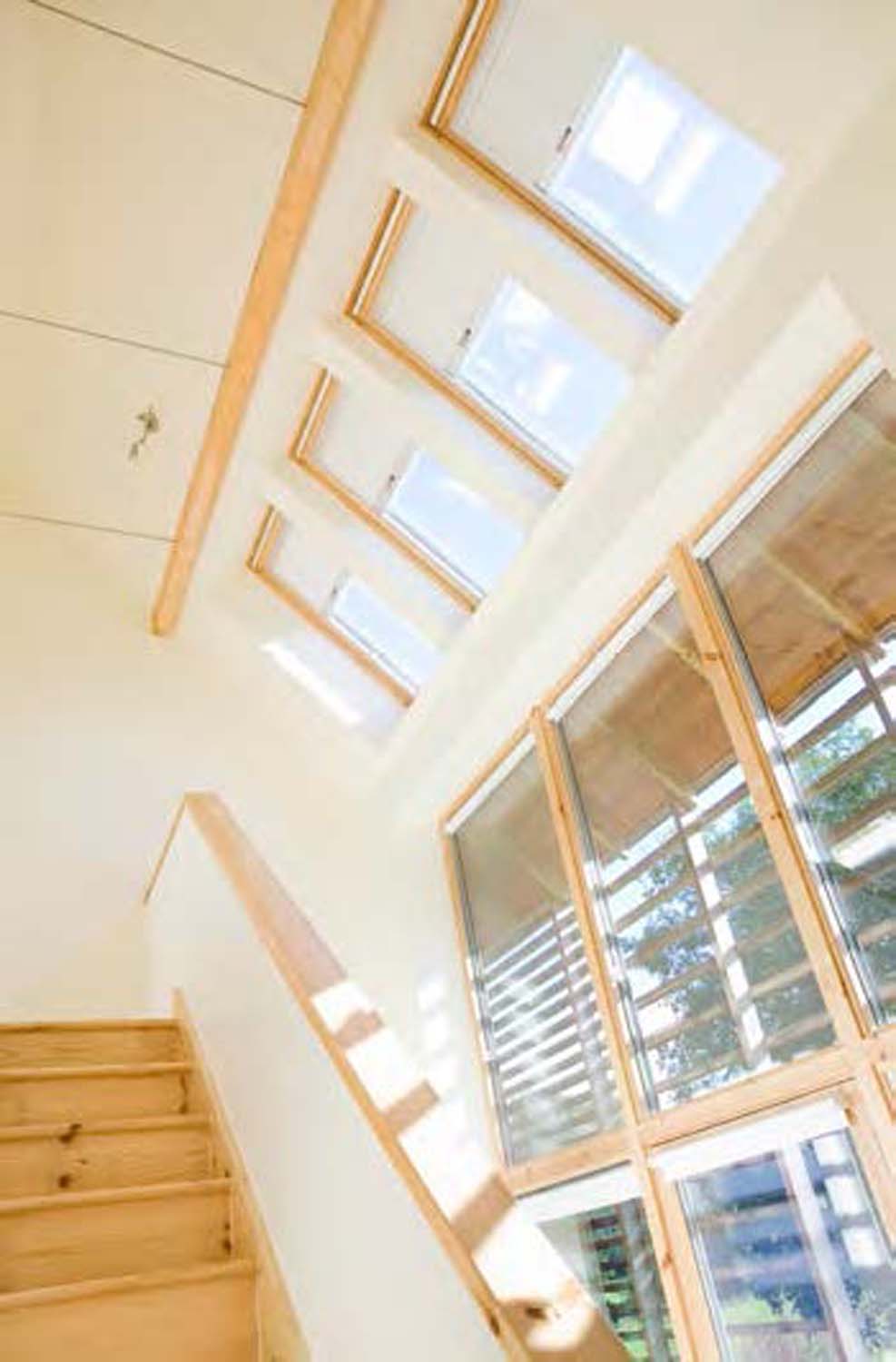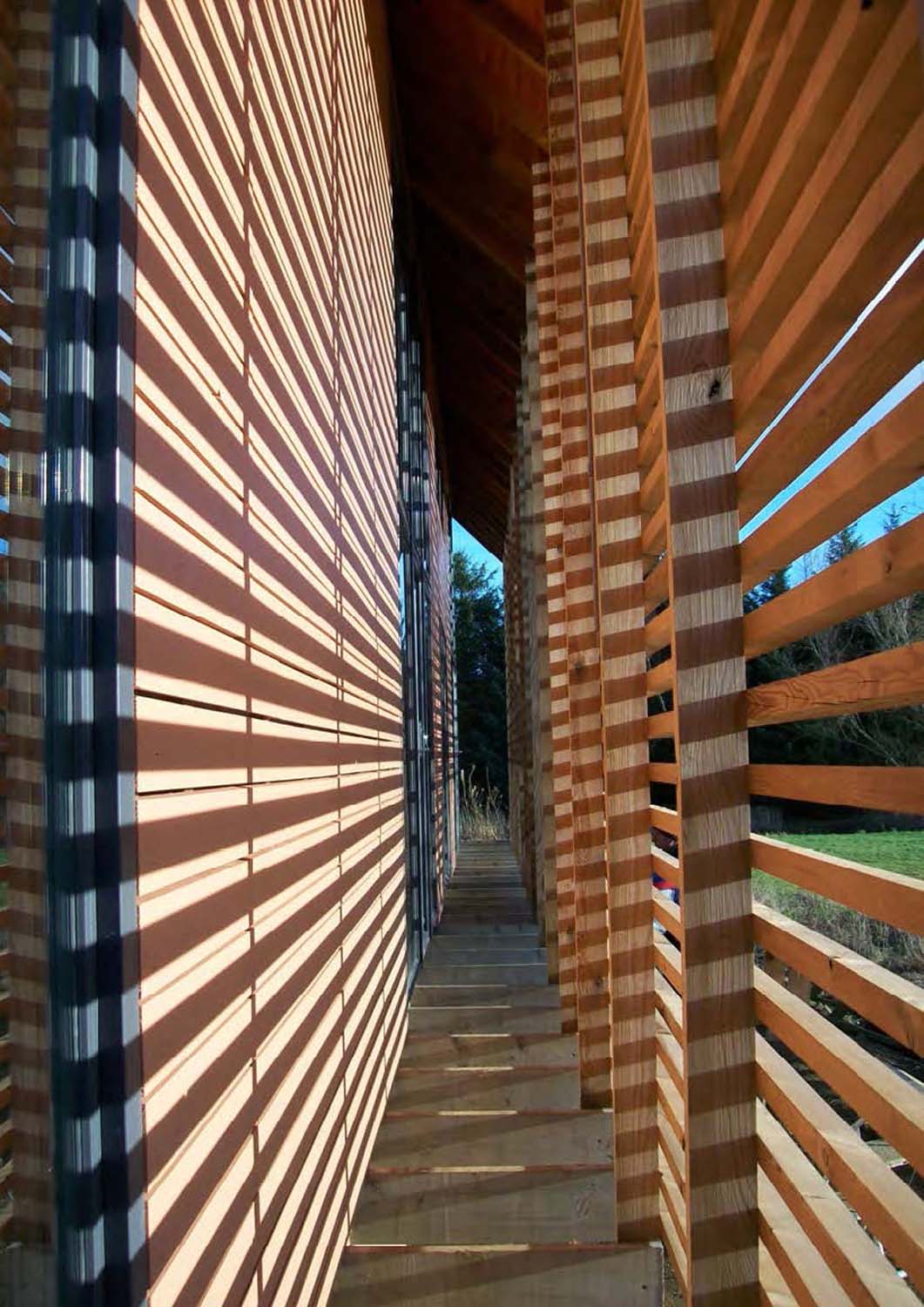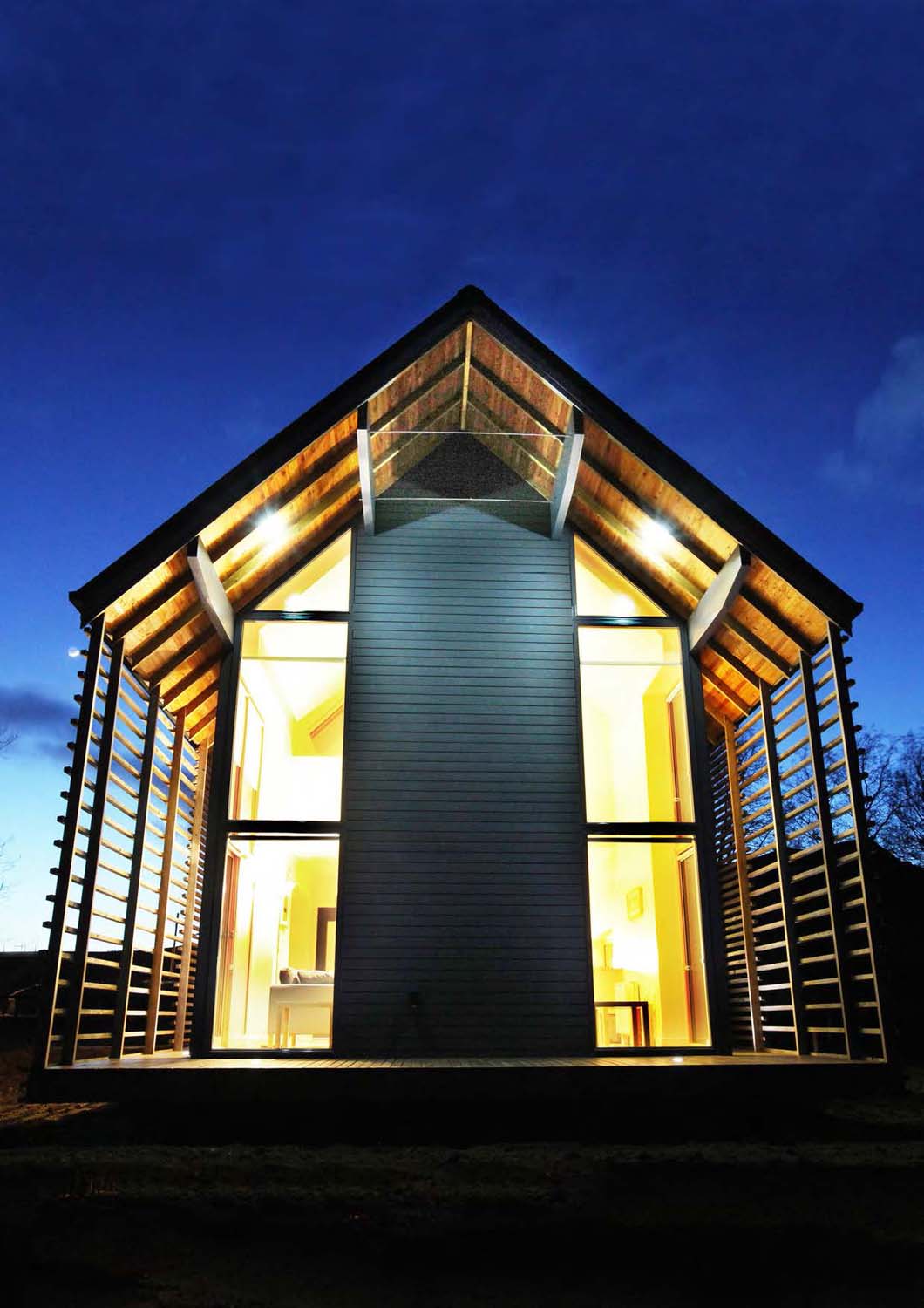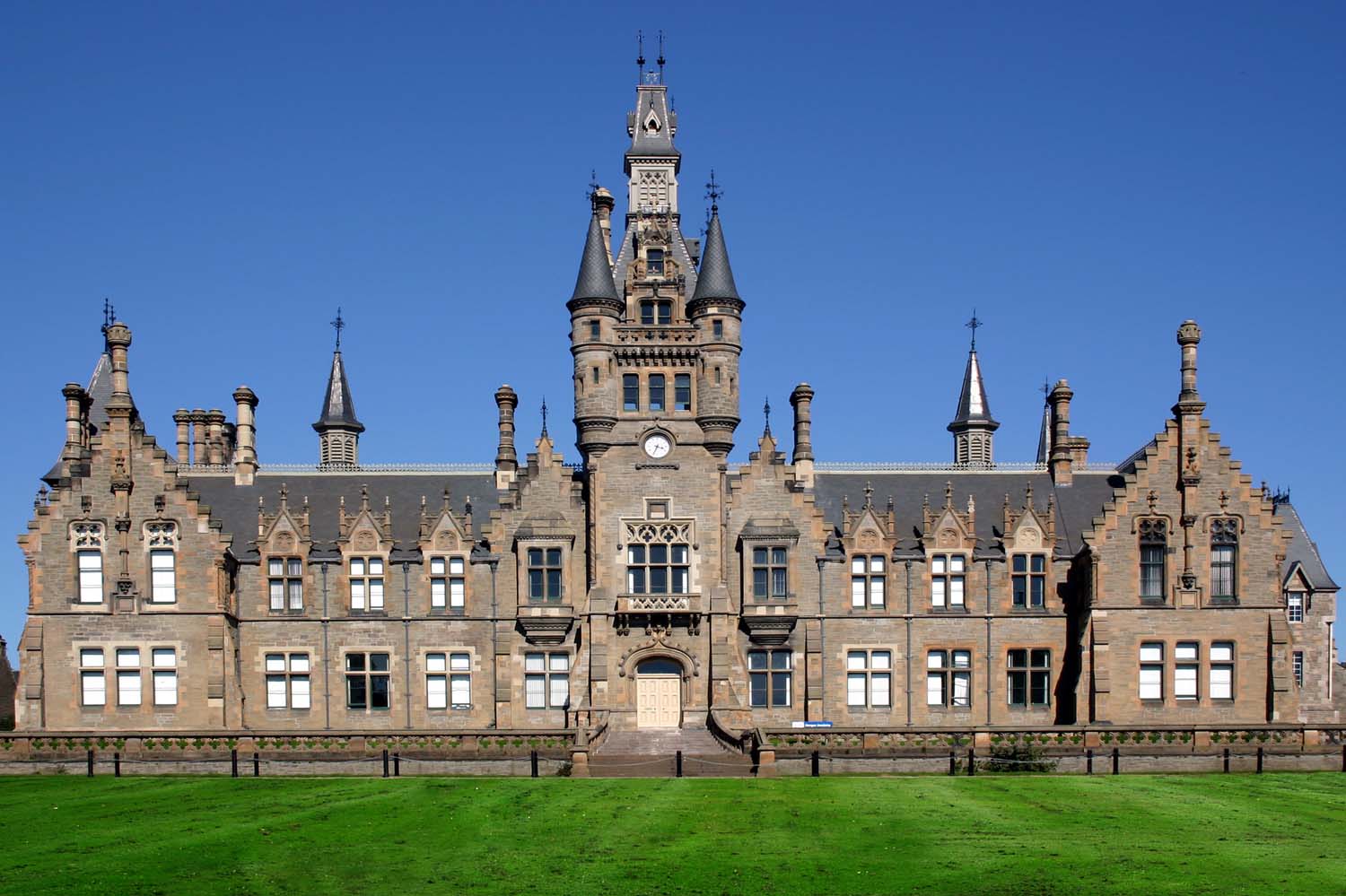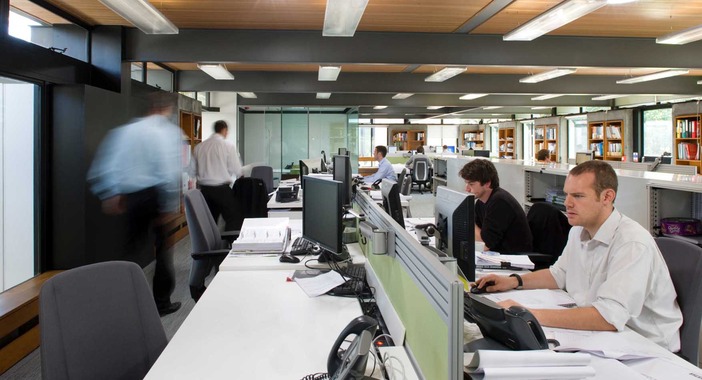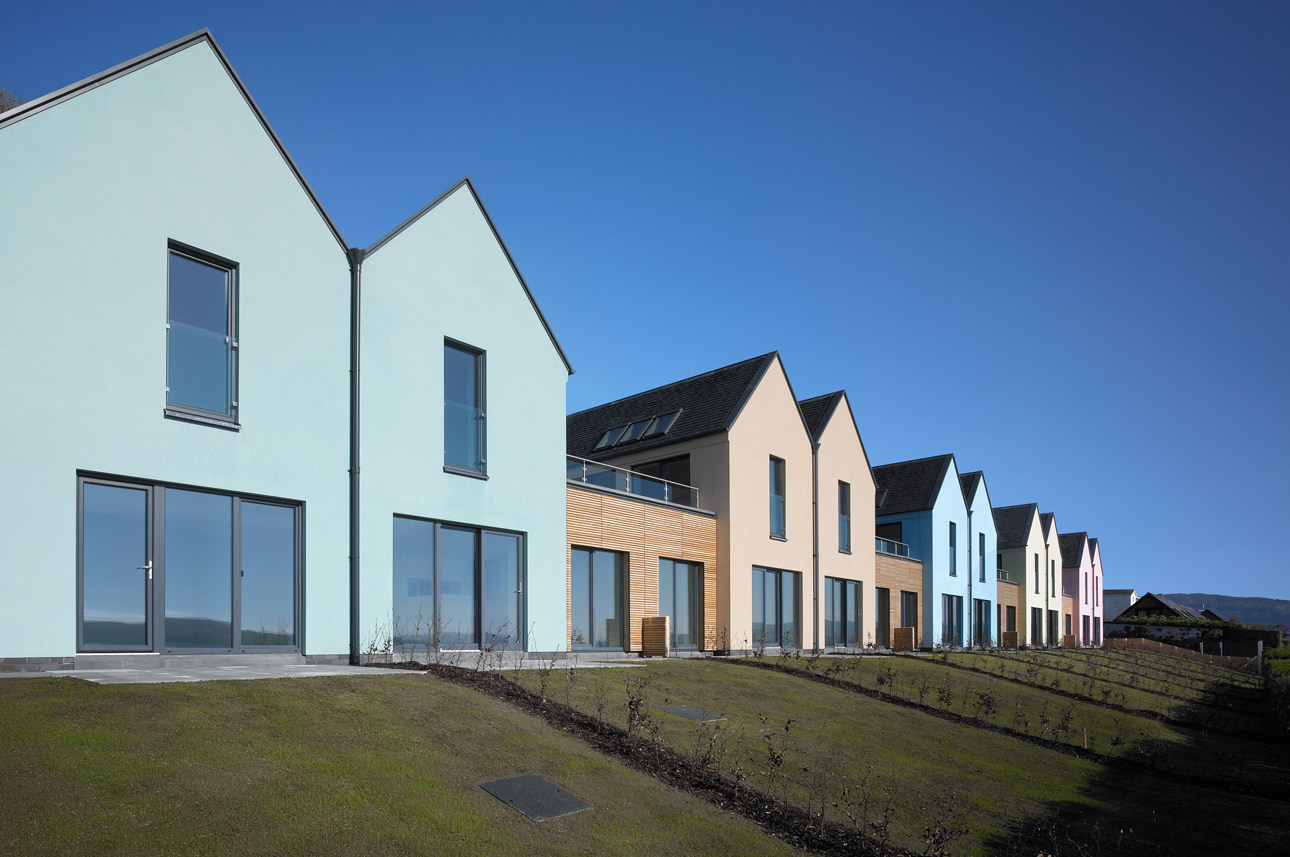Model D House
Read about an approach to rural design that relates to its context and works on a larger scale rather than kit-built homes.
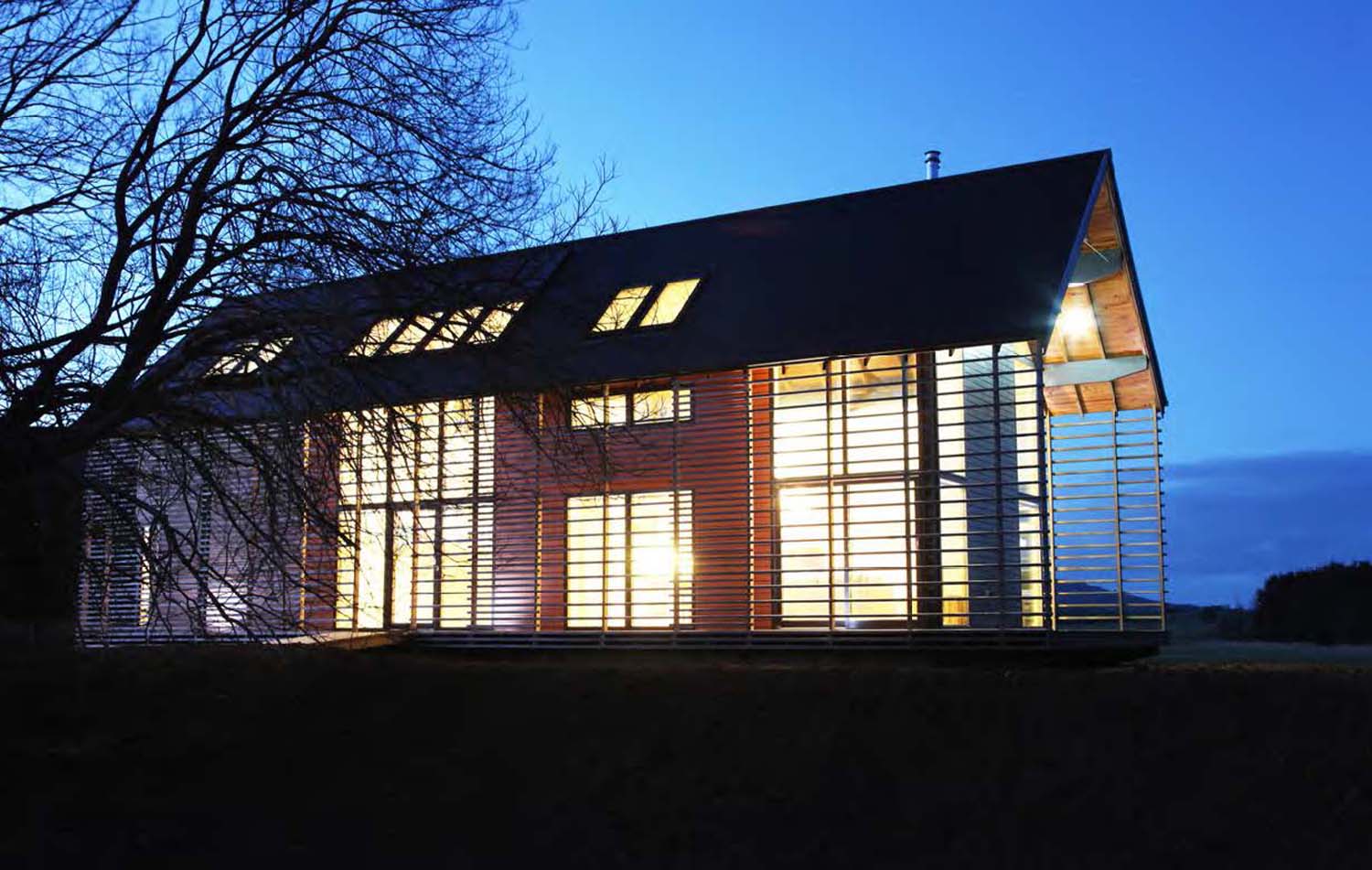
The house is located near Insch in Aberdeenshire and is designed to demonstrate an alternative to the expensive and often bland properties offered by volume developers.
It aims to provide an approach to rural design that relates to its context and could work on a larger scale rather than kit-built homes that are unaffordable.
What this case study covers:
Approach to Model D House
The client aimed to develop alternative contemporary design proposals that would facilitate the provision of affordable, good quality and low-energy designs that utilise home-grown timber.
It also seeks to:
- stimulate revisions in our current thinking about rural house design, including the architectural design
- increased ecological awareness concentrating on more environmental-friendly design and use of local materials
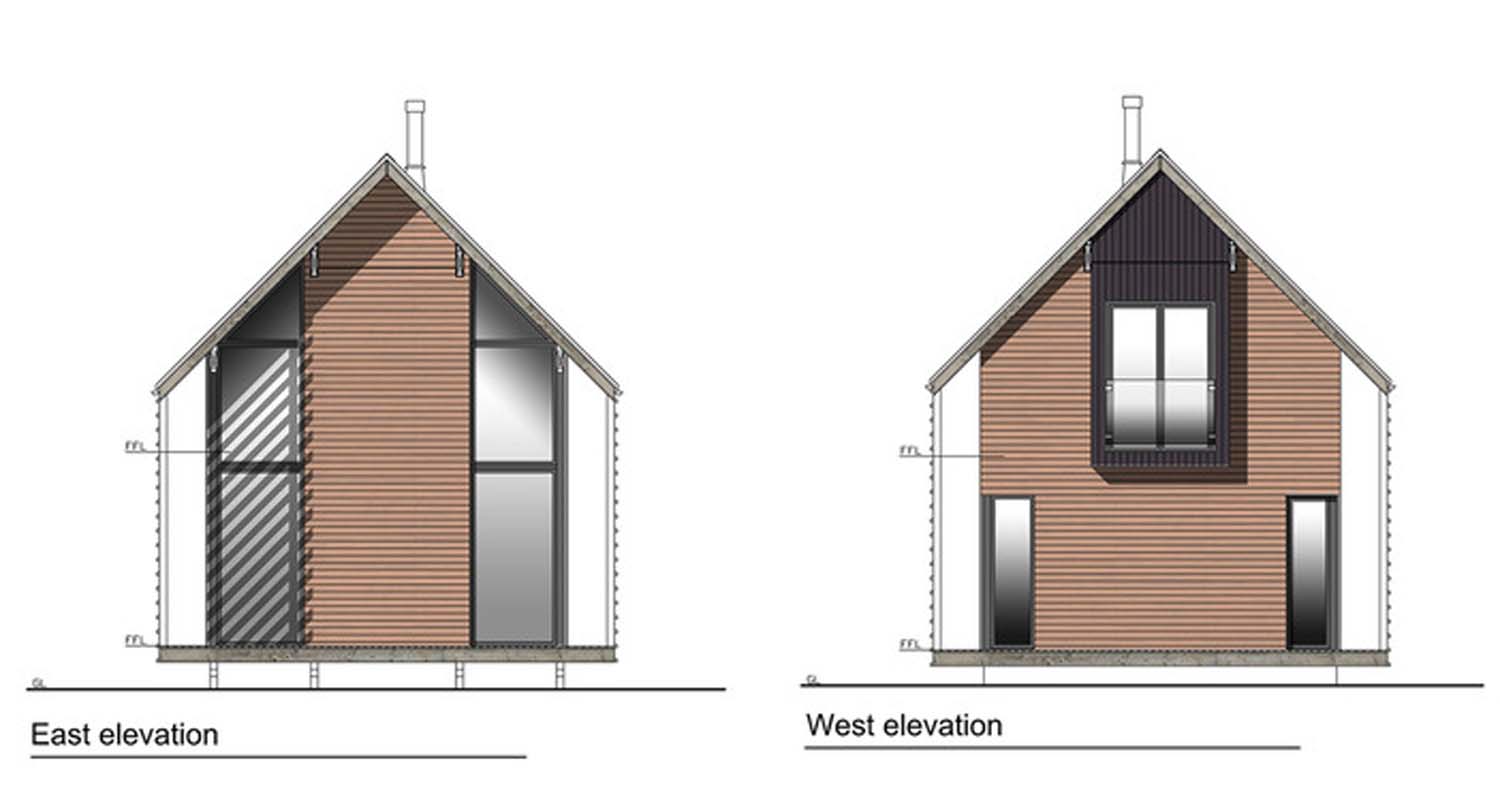
Elevation plan of Model D House
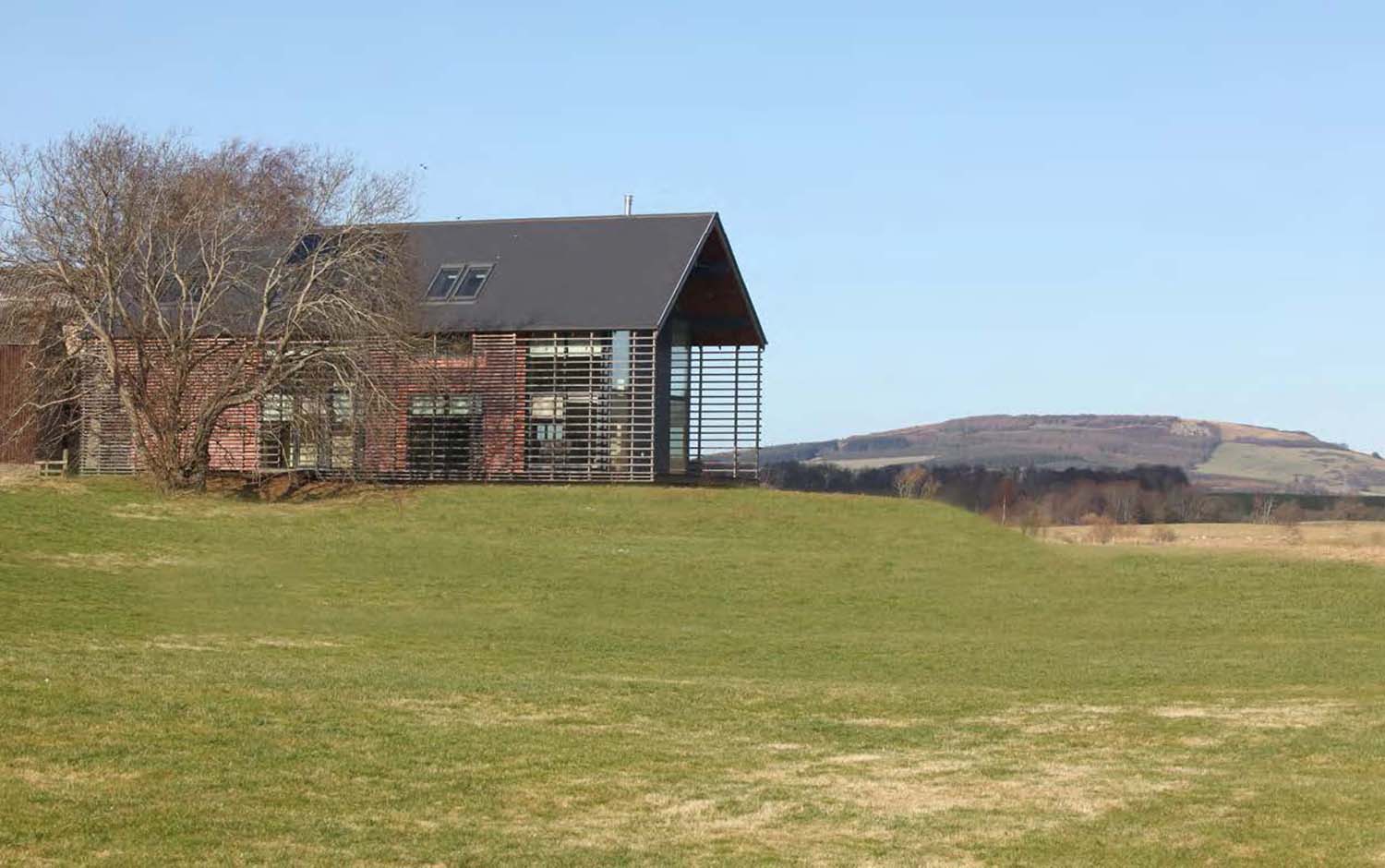
Process of the build
The manufacture of the superstructure uses home-grown Scottish timber, which was delivered on-site in open panels. However, the house was largely stick-built on-site due to the specification of smaller timber sections.
The decision was taken to experiment with an enhanced form of timber kit frame for the house by adopting an innovative double-stud wall and roof arrangement. This allowed the use of standardised timber kit construction sizes which were adapted to provide the necessary requirements for U-values and airtightness.
The wall construction became two leaves of 95x45mm C16 timber frame panels, with a layer of OSB sheathing between to accommodate the airtight membrane.
Similarly, the roof arrangement was two leaves of structure and framing, with an airtight membrane layer between, forming a continuous airtight layer within the walls. The roof structure was constructed of individual rafters with a ridge beam and purlins throughout the length of the house.
This was a preferred method to allow for the airtight membrane to remain continuous and to allow the use of local C16 timbers.
The floor is timber, supported on strip foundations, with insulation tightly fitted between the joists and the airtight membrane lapped with the wall membrane and then taken over and across the joists to continue the airtight layer enveloping the house.
Internally, a 25mm service zone was created on both wall and roof slope to allow for the distribution of services throughout the house without having to duct them through the insulated fabric.
The architects designed the house to the German Passivhaus standard, whereby houses are designed with high thermal performance and exceptional airtightness to minimise heating demand.
All elements that make up the building fabric – the walls, roof and floor – are designed to be below a U-value of 0.15W/m2K and an airtightness of 0.6 m3/(h.m2) @ 50Pa.
The house does not have a gas supply, a common drawback to rural housing. The electrical energy is supplied from the grid and set on a low off-peak tariff to make electricity for heating, lighting and cooking more competitive.
The ‘Model D’ house uses a 5kW wood-burning stove as its primary heat source. It also has electric panel room heaters to provide additional heat input where there is high demand during peak periods of cold weather.
Hot water is supplied through 4.64m2 solar thermal panels with an off-peak boost through an electrical immersion heater for additional heat input.
The approach was to create a flexible living space. The house was designed with a simple long rectangular plan, providing an open plan living/dining and kitchen space and a double bedroom on the ground floor—to comply with ‘lifetime homes’.
There is a separate rear utility room with space for recycling storage and a downstairs bathroom.
Two additional double bedrooms, plus an additional shower room are located within the attic story, accessed off an open gallery space.
The bedroom over the main living space can also be used as a dedicated bedroom. Alternatively, the wall into the void can be opened to provide a dedicated studio or home office space with occasional sleeping arrangements.
The living and main circulation areas have both been designed to make use of the double-height space available to give the interior a sense of light and space.
The design incorporates a terrace around the house that forms a buffer space, protected by the timber screen and usable outdoor space for the occupants.
Large south-facing floor-ceiling openings take advantage of the solar gain and maximise views while expressing the building’s contemporary domestic credentials.
Result of the build
The Model D House was constructed almost entirely from home-grown timber and designed to meet the government's zero-carbon targets in new housing developments in 2016.
It is built with an innovative double-stud system for wall and roof construction, accommodating a continuous use of polythene sheeting for maximum airtightness to meet the Passivhaus standards.
The external rain screening is oven-treated, home-grown larch timber with a long life. The screening protects the inner pine timber wall cladding and provides the house with its micro-climate.
The ‘Model D’ house offers a viable and affordable housing option for rural communities where fuel poverty is a major concern with the rising costs of energy.
The design adopts the architectural language of traditional north-east agricultural buildings. The large window openings in the south façade take advantage of the solar gain and maximize views. It also expresses the building’s contemporary domestic credentials.
Durability and homogeneous appearance are provided by the meticulously detailed external rain screen, providing shading and privacy where required.
This development illustrates that sustainable and energy-efficient design is possible on a low budget. The affordability has not been achieved at the expense of architectural design or construction quality.
The Model D House is a very low-energy contemporary home. It demonstrates the innovative and creative use of home-grown timber, costing less than £900 per square metre to build.
It represents spectacularly good value and is a hard-to-beat model for genuinely affordable housing stock in the countryside.
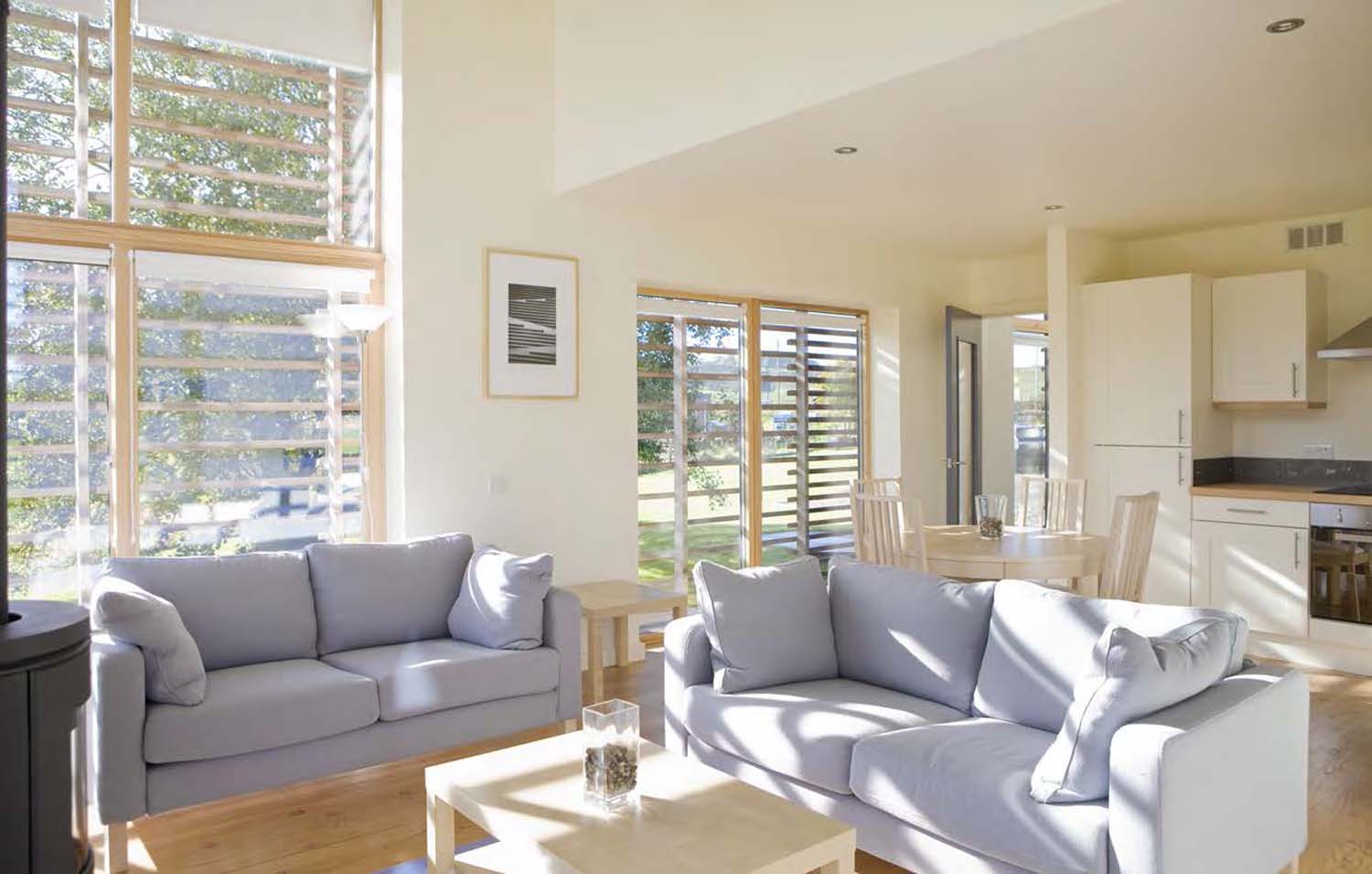
In use
The overall design is simple, while the material choices and detailing are to a high standard and aesthetically pleasing. The layout and the use of open double-height spaces have resulted in increased levels of natural daylight, making for a more pleasant and spacious interior environment.
Public perception of Model D House
Although the intention is to undertake detailed post occupancy evaluation studies on the house, the Model D House has been open to the public as a show house which allowed the design team to engage with feedback.
Much of the public were enthusiastic about the design of the house and the feeling of generosity and space within the internal spaces. They also expressed their delight at the fact that the Model D House represents the architects and clients’ ambition for what the future of affordable housing could be like.
Many initially perceived the house as not being an affordable house, while others changed their reactions and opinions towards affordable housing.
Additional comments from both the public and the current occupiers of the house have been that the levels of lighting, functional space, heating, and cooling provide a comfortable living environment.
The continued monitoring that is taking place will confirm whether the house is indeed achieving the energy performance predicted and the levels of comfort throughout the year.
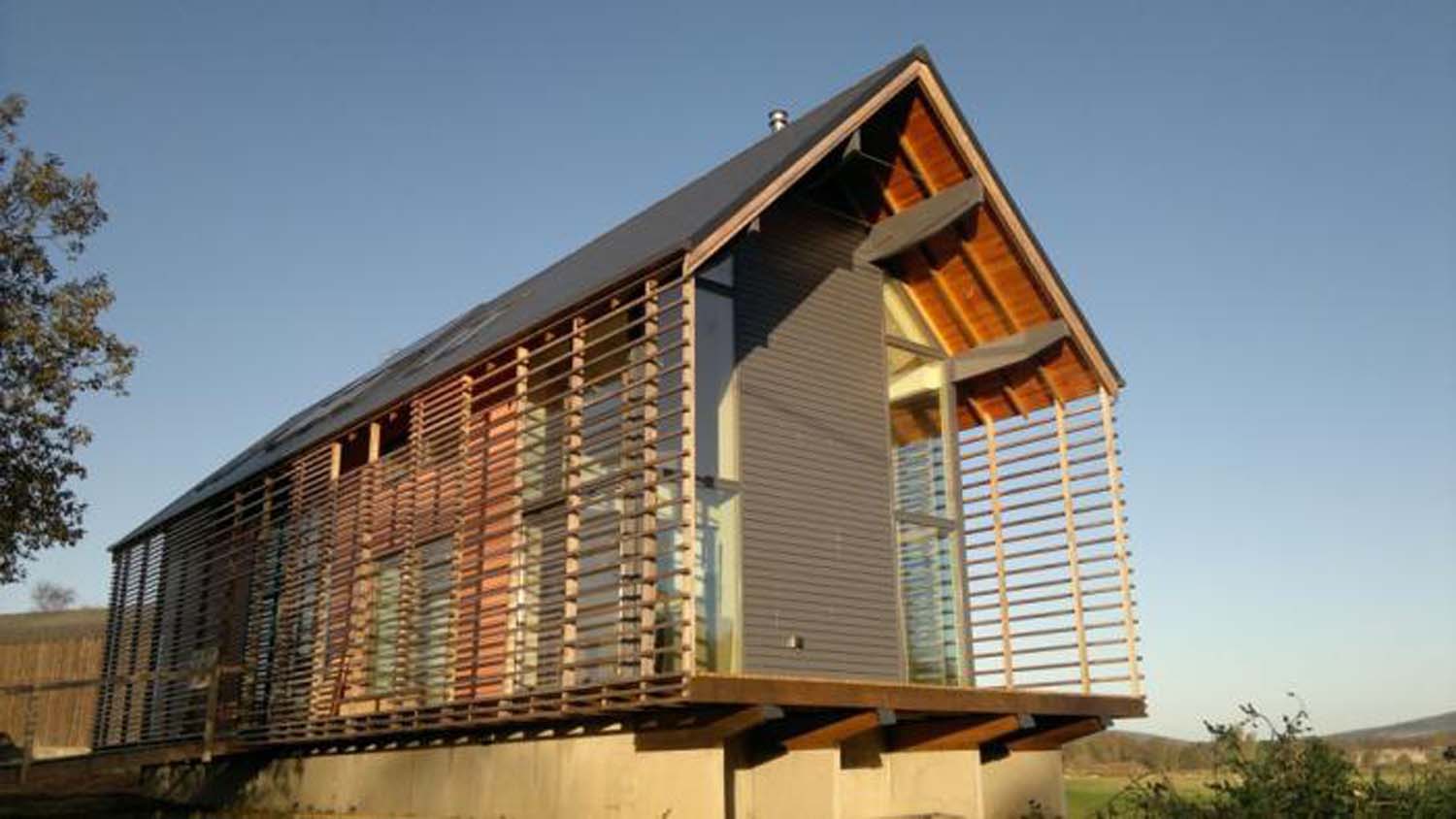
Key lessons learned from Model D House
The key challenge was to deliver low energy housing for the affordable market.
Low energy housing is often viewed to involve a degree of experimentation and a costly ambition to set for any housing project, let alone for affordable housing.
The Model D House used standard construction techniques but in an innovative, yet discrete and sensitive manner.
The key to the project’s success was the knowledge brought forward by the architect and builder. They aimed to rationalise the construction processes, seeking to integrate building design and low-energy strategies.
Only by engaging in this relationship was it possible for the development of the Model D House to become a truly affordable house.
The relationship between the architect, client and manufacturer, in this case, was critical in delivering this affordable housing project to the target specification.
The two parties did not follow a traditional contractual relationship but instead recognised the strengths of each throughout the entire process, from concept design through to completion.
This was aided by the extensive research undertaken during the design stages on various aspects of the house, its design and specification.
The house represents the outcome of an innovative approach to developing and delivering low-cost, low-energy housing.
Undoubtedly, a significant factor in the success of the Model D House was the architects’ unique position of being closely involved with the client (and builder) from the outset.
This long-term relationship allowed further considerations for more innovative sustainable strategies.
The relationship remained upon the completion of the Model D House, whereby both parties undertook a one-year knowledge transfer partnership.
This process aimed to review and develop the Model D House based on lessons learned, with the aim of refining construction processes, specifications, and performance.
The house demonstrates that home-grown Scottish timber can be used to construct low-energy affordable homes for Scotland.
However, issues have been identified with the long-term durability of the specified timbers, particularly as the cladding and decking require regular maintenance.
The Model D House demonstrates that good design is possible within the tight budgets demanded by the affordable housing market. The house has an outward appearance of a bespoke one-off home.
However, we do not see this as a bad characteristic. It is better than the current standard, as it translates to promoting a new ambition for what we and society view as affordable housing.
All image credits: G Deveci chartered Architect, Mark Seager Simple Photography and Stuart Johnstone Photography
Related case studies
We have additional case studies available on our website which you can access below. From sustainable design to material considerations, these case studies can help to provide you with a better understanding of how to design for a better Scotland.


